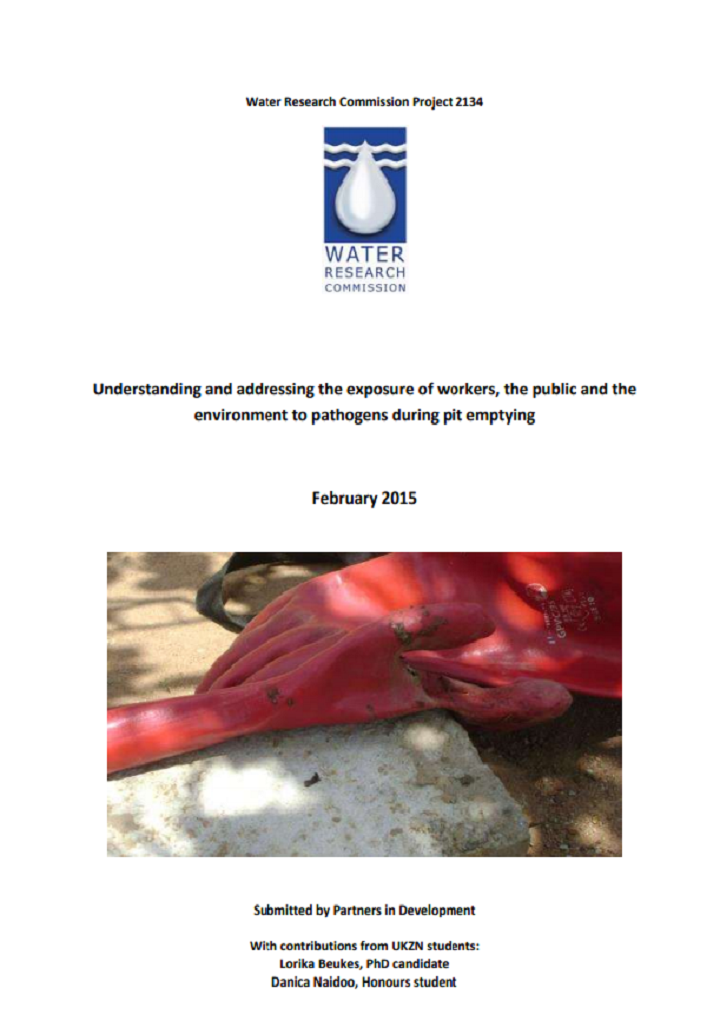Understanding and addressing the exposure of workers, the public and the environment to pathogens during pit emptying - Water Research Commission Project 2134
Beukes, L., Naidoo,D. (2015)

Published in: 2015
Pages: 144
Publisher:
Water Research Commission
Author:
Beukes, L., Naidoo,D.
Uploaded by:
Shobana Srinivasan
Partner profile:
Water Research Commission
3736 Views
30 Downloads
Location of library entry
On-site sanitation is a desirable option in many contexts and various on-site technologies have been rolled out in South Africa, as well as other countries, as a basic standard of adequate sanitation. Most on-site sanitation
systems accumulate sludge in a collection chamber which eventually becomes full and needs to be
emptied; the system can then be recommissioned for another cycle of use. If, in the process of
emptying the collection chamber, workers or the public are exposed to the pathogens in the sludge
or the environment becomes contaminated with sludge, then the most fundamental purpose of the
sanitation system has been compromised. It is therefore of paramount importance to public and
environmental health that the removal of sludge from on-site systems be conducted in such a way
that the risk of humans or the environment coming into contact with sludge is reduced as far as
possible, and that stringent measures are put in place for decontamination should exposure occur.
This document is the product of a study of the pathways of potential exposure to sludge during pit
emptying and ways to reduce risks which was conducted by Partners in Development, with
collaboration from the University of KwaZulu-Natal, on behalf of the Water Research Commission.
Content - Summary
The study consolidates existing knowledge of the hazards associated with sludge management and
guidelines for minimizing risk. Several investigations were undertaken which expanded existing
knowledge on this subject:
• A case study of pit emptying at 10 homes was conducted which included observations of pit
emptying practice, interviews with householders and pit emptiers, and the analysis of samples
collected from surfaces and from the pit during pit emptying to determine where
contamination with representative pathogens occurred.
• Baseline data on the incidence of helminthic infections was collected on 96 adult volunteers
in the Easter Cape
• Four household cleaning agents were tested for their ability to deactivate helminth eggs
Bibliographic information
Beukes, L., Naidoo,D. (2015). Understanding and addressing the exposure of workers, the public and the environment to pathogens during pit emptying - Water Research Commission Project 2134. Water Research Commission
Filter tags
English Guidelines and manuals Operation, maintenance and sustainable services (WG10) Peri-urban Practitioners Sub-Saharan Africa Urban (entire city)















